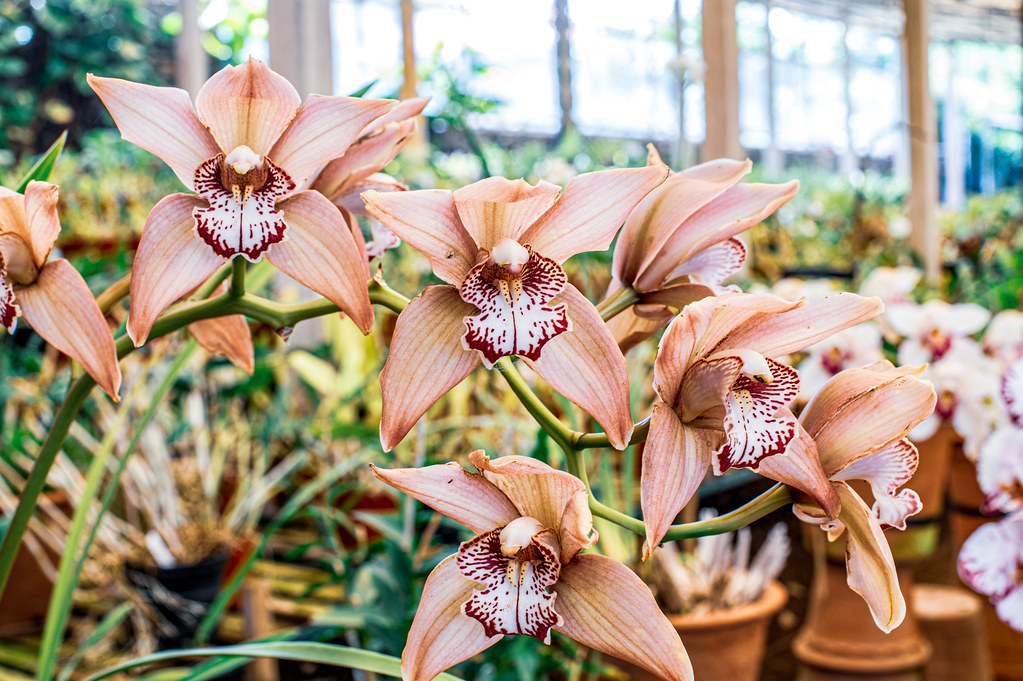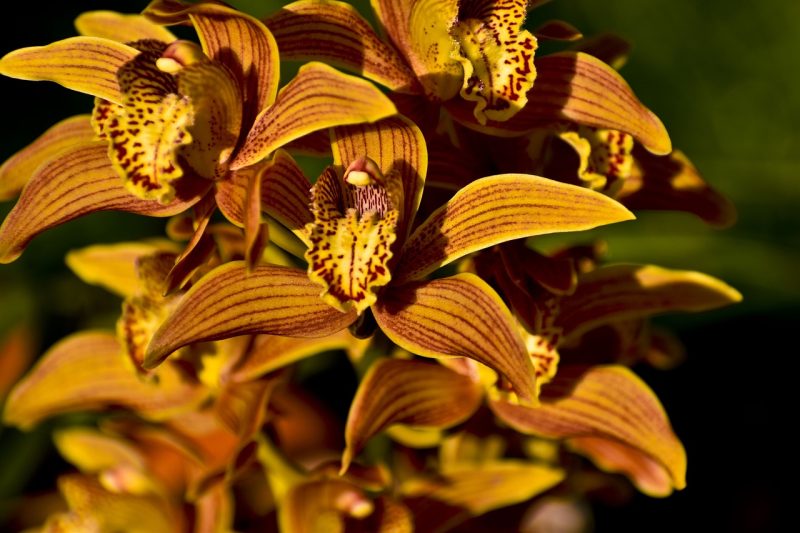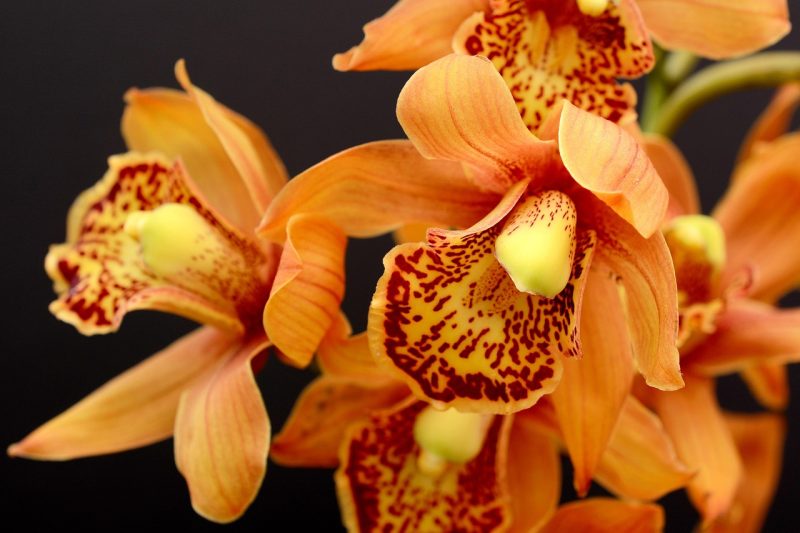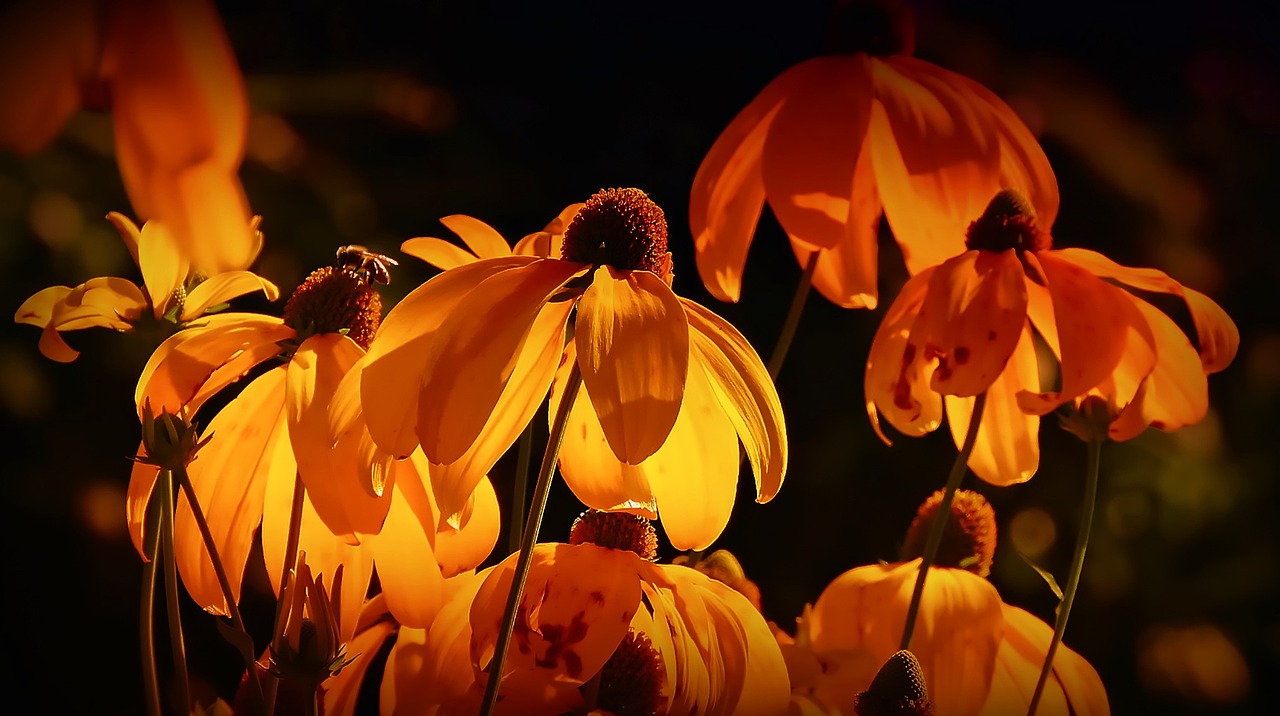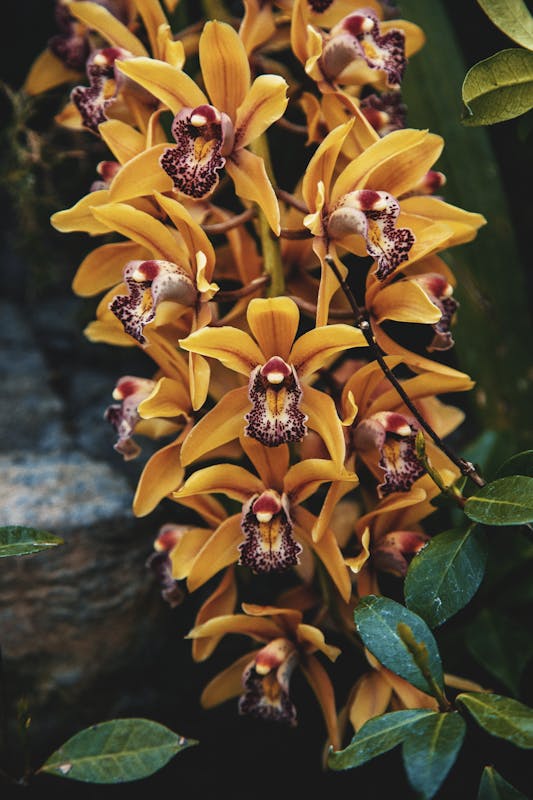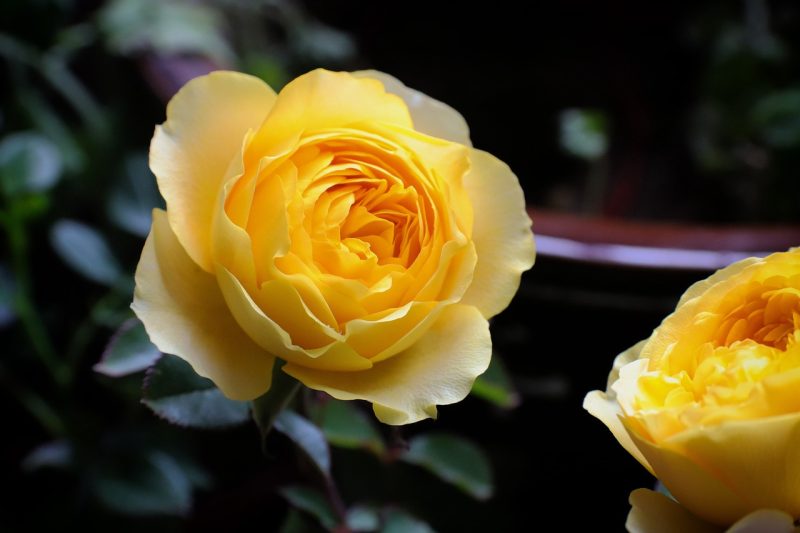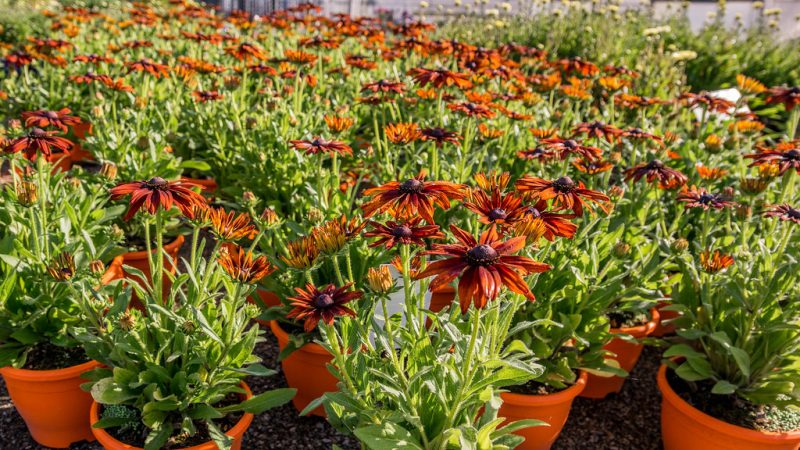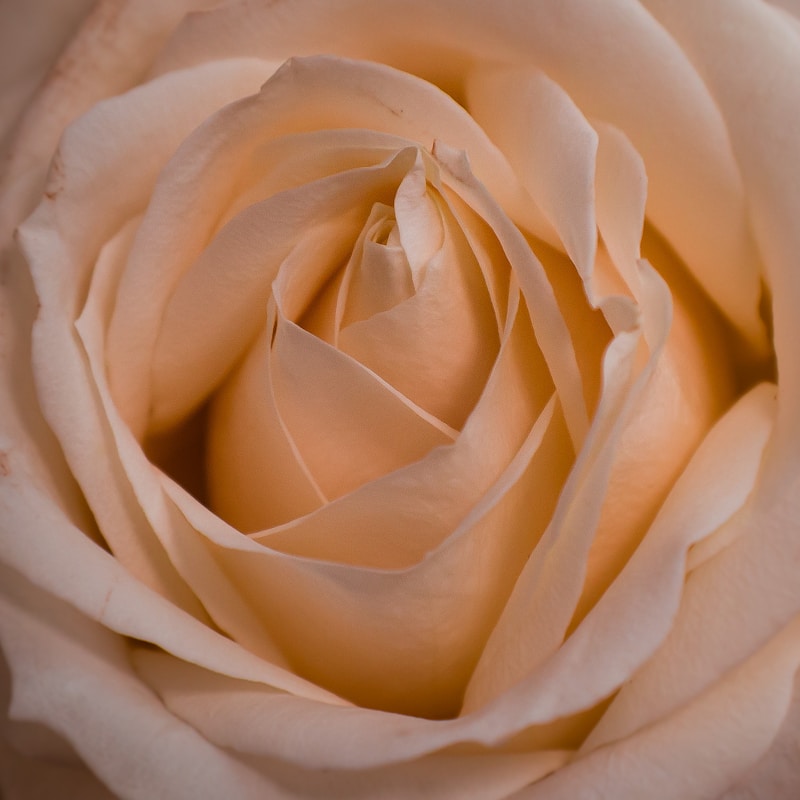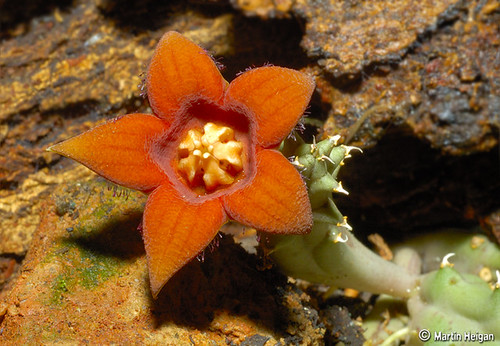While many seek the vivid hues of traditional blossoms, the understated elegance of brown flowers offers a unique aesthetic that can evoke warmth, sophistication, and even a sense of mystery. Each of these flowers carries its own charm and botanical intrigue, demonstrating that brown flowers can be as stunning and vibrant as their more colorful counterparts.
Absalon Tulip/Rembrandt Tulip
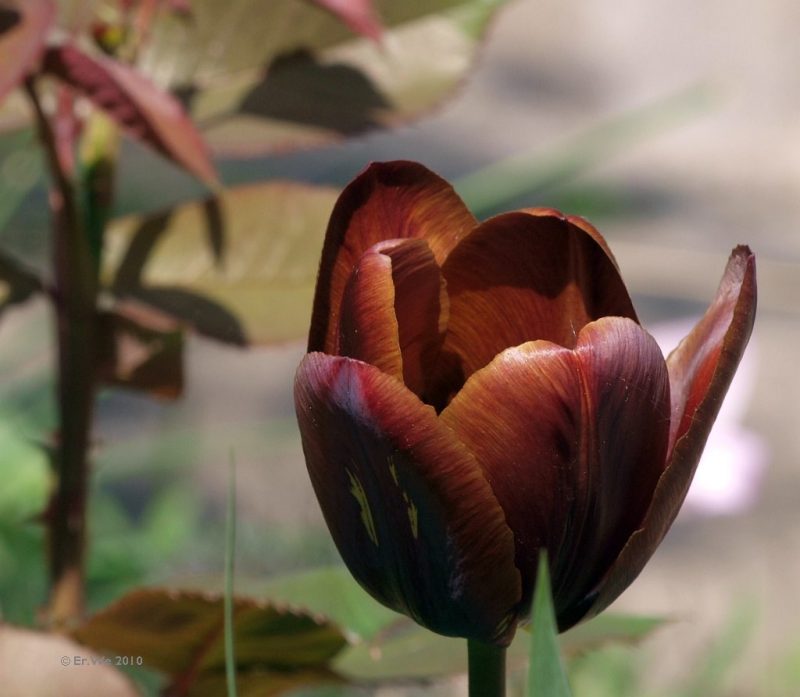
The Absalon Tulip, also known as the Rembrandt Tulip, is a captivating flower that stands out for its rich earthy tones and intricate patterns. Unlike the standard tulip that showcases uniform colors, the Rembrandt Tulip displays a stunning blend of deep browns and warm, dappled accents often reminiscent of brushstrokes on a canvas. This unique coloration is the result of a viral infection that once plagued tulips, leading to the vivid stripes and spots characteristic of the Rembrandt-style tulips from the 17th century.
Cultivating Absalon Tulips can elevate any garden, bringing an air of historical significance and artistic flair. These tulips thrive in well-drained soil and prefer full sun, making them ideal candidates for spring gardens. They bring not only beauty but also an element of history, connecting modern gardeners with the Flemish artists and traders who immortalized such flowers in their works. Featuring an enticing blend of nature and art, Absalon Tulips inspire admiration and curiosity among flower enthusiasts.
Aloe Leafed Cymbidium
The Aloe Leafed Cymbidium is another intriguing flower that captivates with its earthy presence. This species of orchid, known for its elongated, fleshy green leaves, produces inflorescences with striking brown blooms. These flowers exhibit a unique textural quality that sets them apart from more conventional orchids. The blooms often display a stunning palette of muted browns, sometimes laced with hints of reds and yellows, mimicking the colors found in autumn foliage.
The Aloe Leafed Cymbidium excels in both indoor and outdoor settings, thriving in well-drained soils and preferring partial shade. Given its affinity for subtropical climates, this orchid is a coveted choice among collectors and practitioners of floral design. Its robust character, coupled with its stunning blossoms, makes it an eye-catching feature in any floral arrangement. Moreover, the Aloes’ intricate designs often remind viewers of natural landscapes, reflecting the broader themes of ecological interconnectedness.
Antler Orchid
The Antler Orchid, with its striking resemblance to the branched antlers of a deer, is a true botanical marvel that embodies the spirit of brown flowers. Native to tropical regions, these unique orchids boast elongated, curved stems that hold clusters of intricate blooms. The flowers themselves are typically a rich brown, with hints of green or yellow, providing them with a rustic charm that is both exotic and inviting.
What’s fascinating about the Antler Orchid is not only its unusual appearance but also its reproductive strategy. The flower’s shape is designed to attract specific pollinators, including wasps and bees, which are drawn to its unique morphology. This symbiotic relationship showcases the operational intricacies of ecosystems where color and form play critical roles in survival. In cultivation, the Antler Orchid thrives in humid environments and can be mounted on trees or allowed to flourish in pots, making it a versatile addition to any plant collection.
Bearded Iris
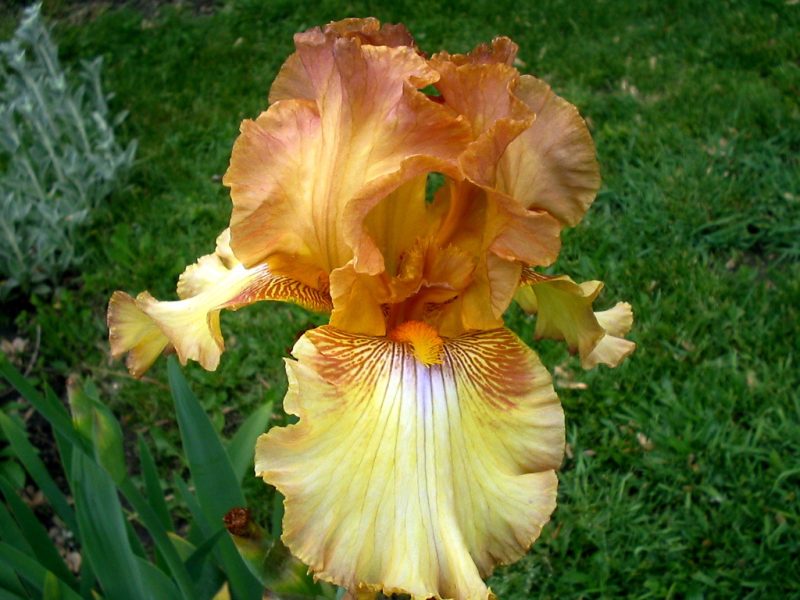
The Bearded Iris, with its regal stature and complex structure, offers a noteworthy opportunity to appreciate the beauty of brown in blooming flora. These irises can feature a stunning palette of colors, but certain cultivars stand out for their rich, brownish hues, often paired with intricate veining and ruffled petals. The beards, a distinctive feature unique to this genus, are hairy extensions on the falls (the lower petals), adding texture and depth to the overall presentation.
What makes the Bearded Iris particularly appealing is its adaptability and resilience. Thriving in a variety of climates, these perennial plants are low-maintenance and can flourish with minimal care once established. Bearded Irises often prefer well-drained soil and full sun, making them suitable for diverse garden settings. When selecting brown varieties, such as “Hocus Pocus” or “Russet,” gardeners can achieve a sophisticated, monochromatic effect by pairing them with contrasting greens or vibrant blooms. Additionally, their historical significance in traditional medicine circles, as well as their prominence in artistic representations throughout history, underscores the Bearded Iris’s role as not just a flower, but a symbol of culture and heritage.
Blanket Flower
The Blanket Flower, also known as Gaillardia, is a vibrant perennial that brings a warm, sun-kissed quality to gardens with its brown and golden palette. While often characterized by fiery reds and flaming oranges, specific varieties showcase beautifully muted brown petals that contribute to a rustic, earthy feel. These unique blooms resemble daisy-like flowers with rounded, petal-like rays that are often tinged with darker browns at the center, catching the eye and eliciting admiration.
Blanket Flowers thrive in sunny environments and are known for their resilience in drought conditions, making them an excellent choice for low-water gardens or xeriscapes. They attract a variety of pollinators, including bees and butterflies, which aids in the maintenance of a healthy garden ecosystem. The rich soil and proximity to other vibrant flowers can enhance their brown varieties, creating a harmonious blend of colors. Furthermore, these flowers are often used in wildflower mixes to attract wildlife and bring natural beauty to landscapes. By incorporating Blanket Flowers into your planting scheme, you can cultivate a space that is not only visually pleasing but also ecologically sound.
Boat Orchid
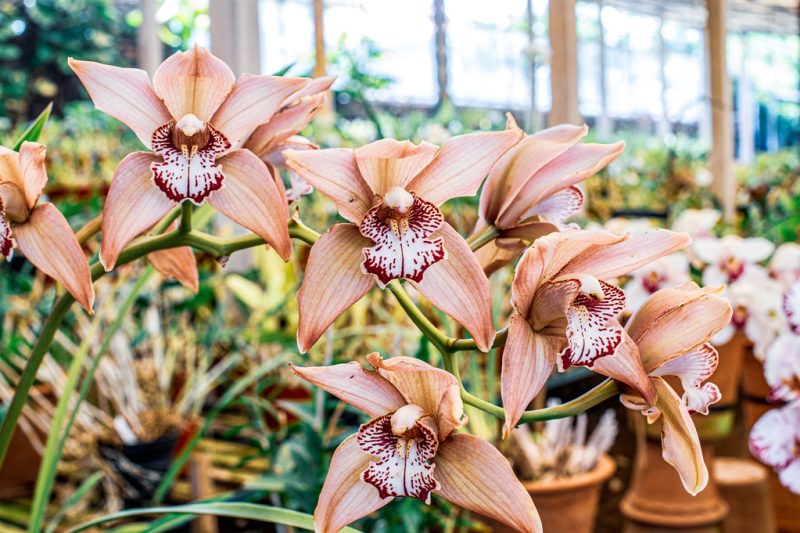
The Boat Orchid, or Cymbidium, adds yet another layer of allure to the realm of brown flowers. This orchid species stands out with its distinctive boat-shaped flowers that can unveil hues ranging from deep espresso to soft taupe. The blooms, typically borne in clusters, exhibit an exotic charm that can transform any indoor or outdoor space into an elegant sanctuary. Each flower features intricate markings and patterns, often taking on a velvety texture that contrasts beautifully with their elegant green leaves.
Cultivating Boat Orchids requires specific conditions, as they thrive in environments that mimic their subtropical origins. They prefer bright, indirect sunlight and appreciate a humid atmosphere, making them excellent choices for conservatories or bright, airy rooms. Boat Orchids can also be grown outdoors in warmer climates, providing an opportunity for gardeners to showcase their unique beauty in natural landscapes. These orchids are often prized for their longevity as cut flowers, with brown-hued blooms lasting for weeks in arrangements, bringing sophistication and intrigue to floral displays.
Carolina Allspice
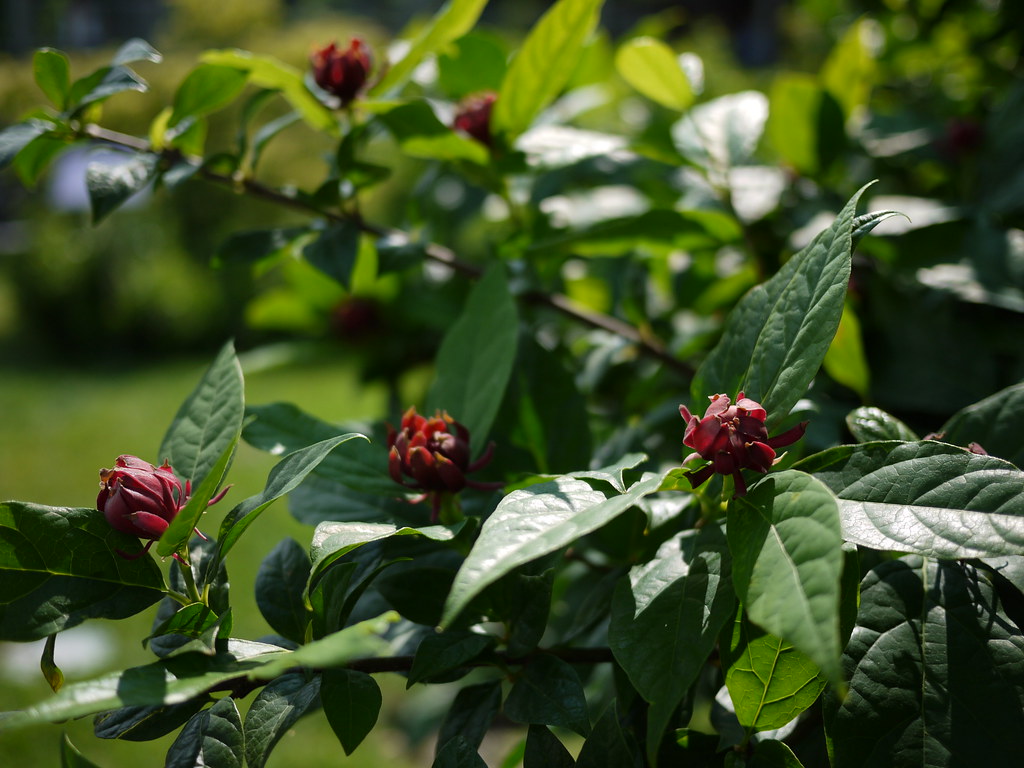
Carolina Allspice, also known as Calycanthus floridus, is a shrub that captivates observers with its delicate, brownish blooms that exude a rich, spicy fragrance reminiscent of allspice, giving the flower its delightful name. The Carolina Allspice produces cup-shaped flowers that open to reveal a deep, chocolate-brown interior, surrounded by layers of maroon and purple petals. This enticing floral display heralds the arrival of spring, providing an aromatic spectacle that lures pollinators like bees and butterflies.
Native to the southeastern United States, the Carolina Allspice thrives in well-drained, moist soils, often found in woodland edges and clearings. This adaptable shrub can grow in a variety of light conditions, thriving in both partial shade and full sun, making it an outstanding choice for garden borders or naturalized plantings. In addition to its floral beauty, the Carolina Allspice is also valued for its foliage; its deep green leaves transition to stunning shades of yellow in the fall, providing year-round interest. Furthermore, the plant’s historical uses in traditional medicine for its anti-inflammatory and analgesic properties further underscore its multifaceted appeal.
Carrion Flower
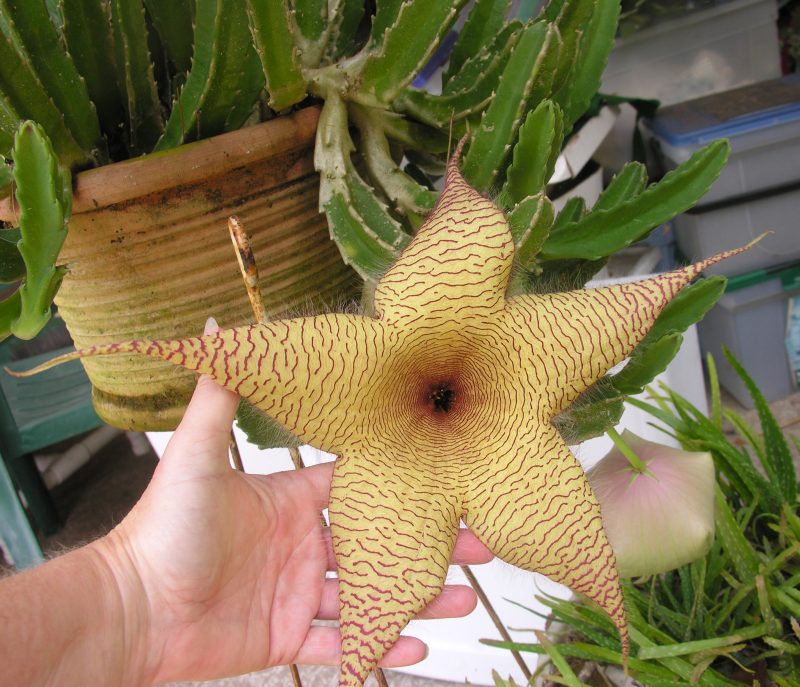
The Carrion Flower, or Stapelia gigantea, takes the concept of brown flowers to a whole new level, captivating those who encounter it with both its striking appearance and pungent odor. This peculiar succulent features large, star-shaped blooms that can be a deep, rusty brown, often adorned with a network of fine hairs that give the petals a velvety texture. The Carrion Flower’s unique smell, likened to that of rotting flesh, serves a crucial ecological purpose: it attracts specific pollinators, particularly flies, which are drawn to the scent to assist in reproduction.
Native to southern Africa, Carrion Flowers thrive in arid environments, displaying remarkable drought resistance. These plants are often grown in rock gardens or succulent collections, where their unconventional flowers can provoke curiosity and admiration. While the smell may deter some, the fascination with the plant’s form and function draws in adventurous gardeners and plant enthusiasts alike. Beyond its striking appearance, the Carrion Flower also offers an interesting conversation piece about nature’s adaptive strategies, highlighting how even the most unusual traits can play vital roles in an ecosystem.
Cattleya Angereri
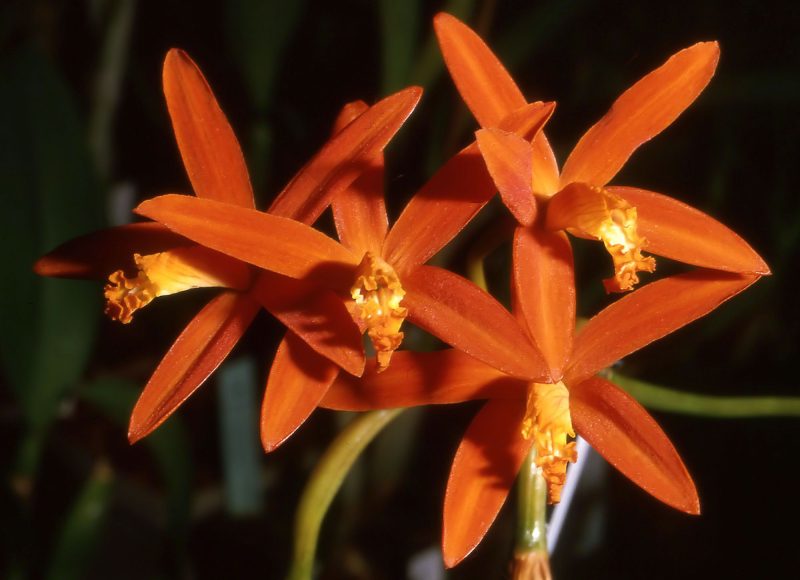
Cattleya Angereri, often celebrated for its bold, captivating blooms, represents the essence of elegance within the realm of brown flowers. This orchid species features large flowers that can display beautifully intricate patterns, often blending brown with vibrant shades of orange, yellow, and pink. The rich colors of Cattleya Angereri can offer warmth and depth to floral arrangements, making it an exquisite choice for both novice and experienced orchid enthusiasts.
Cattleya Angereri is a popular choice for cultivating indoors, as it thrives in bright, indirect light and requires a warm, humid environment to flourish. This orchid benefits from well-drained potting media, which contributes to its overall health and vibrancy. Known as the “Queen of Orchids,” Cattleya varieties can also be rewarding to hybridize, leading to the creation of stunning new cultivars. The appeal of this species extends beyond its beauty; it often serves as a focal point in tropical-themed gardens and exotic floral arrangements, highlighting the luxurious aspects of the art of floral design.
Cattleya Velutina / Velvety Cattleya

Cattleya Velutina, commonly referred to as the Velvety Cattleya, exemplifies the luxurious charm found in brown flowers. This striking orchid is distinguished by its velvety texture and rich, brownish-purple petals that create an exquisite contrast against its bright yellow or orange lip, forming a stunning visual display. The Cattleya Velutina is a relatively compact orchid, which makes it a popular choice among collectors and enthusiasts alike.
Native to the humid forests of Central and South America, this orchid thrives in conditions that mimic its natural habitat—bright light and high humidity are essential for its growth and flowering. The Velvety Cattleya blooms during the warmer months, often producing one or two stunning flowers that can last for several weeks, adding a splash of earthy elegance to any collection. This species not only captivates with its beauty but also plays a role in local ecosystems by attracting various pollinators, including bees, who are drawn to its vivid colors and fragrant blooms.
In cultivation, the Cattleya Velutina requires careful attention to its watering regime and light exposure. Successful growers often recommend allowing the plant to dry slightly between watering, while also providing a well-draining orchid medium to encourage strong root development. With proper care and conditions, the Velvety Cattleya will reward efforts with show-stopping blooms that leave a lasting impression.
Charlie Brown Rose
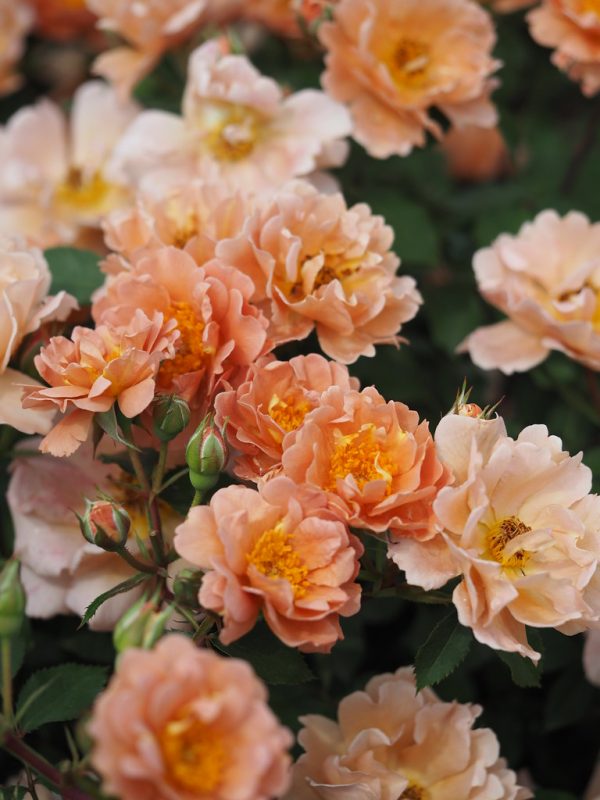
The Charlie Brown Rose, a delightful cultivar named after the iconic Peanuts character, is an enchanting addition to the world of brown flowers. These roses exhibit a lovely mix of soft browns and cream, creating a nostalgic warmth that can brighten even the simplest of floral arrangements. The petals are often flecked with hints of creamy yellow, enhancing their charm and making them a versatile option for various occasions, from weddings to casual gatherings.
This rose variety is known for its robust growth habit and disease resistance, making it a favorite among gardeners seeking low-maintenance but stunning blooms. The Charlie Brown Rose typically blooms in flushes throughout the growing season, providing a continuous display of color and fragrance that attracts pollinators, such as bees and butterflies. Excellent for cut flower arrangements, these roses are sure to leave a lasting impression with their captivating tones and delicate fragrance.
Gardeners looking to incorporate the Charlie Brown Rose into their landscapes will find that it thrives in well-drained soil with plenty of sunlight. Regular pruning encourages bushier growth and a more abundant flowering display, making this rose a delightful centerpiece in any garden. Its unique coloration not only adds visual interest but also reveals the nuances of brown in the plant kingdom, allowing for creative combinations with other flowering plants.
Chocolate Cosmos
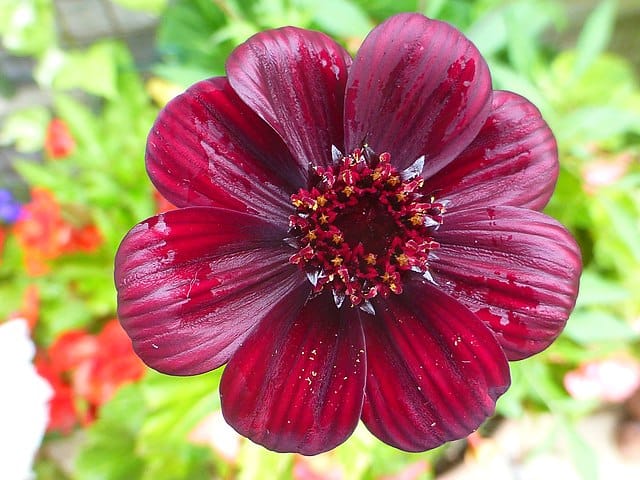
The Chocolate Cosmos, known scientifically as Cosmos atrosanguineus, is a striking flower that delights both the eyes and the nose. Renowned for its deep, rich brownish-red petals that resemble dark chocolate, this perennial plant exudes a sweet, chocolatey fragrance that is particularly alluring. The blooms have a velvety texture and can reach up to 2 inches in diameter, making them an eye-catching choice for gardens and arrangements alike.
Native to Mexico, Chocolate Cosmos flourish in warm, sunny environments and prefer well-drained, sandy soils. Their resilience and ability to attract pollinators, especially bees, make them an excellent choice for biodiversity in garden designs. When planted among other vibrant flowers, the deep hues of the Chocolate Cosmos can create striking contrasts while adding a touch of exotic flair to the landscape.
In terms of cultivation, these flowers require minimal care, making them perfect for both novice and experienced gardeners. They typically bloom from mid-summer until the first frost, providing an extended season of beauty. Chocolate Cosmos can be enjoyed in cutting gardens, where their intoxicating scent enhances any bouquet. Additionally, this flower is often used to symbolize love and appreciation, making it a meaningful gift in floral arrangements.
Chocolate Orchid / Dancing Lady Orchid

The Chocolate Orchid, often known as the Dancing Lady Orchid (Oncidium Twinkle), is truly a floral masterpiece. With its delicate blossoms and rich hues, which can range from deep burgundy to soft brown, this orchid is a spectacular choice for collectors and flower enthusiasts alike. The blooms are often adorned with intricate markings and patterns, giving them a sumptuous appearance reminiscent of fine chocolate.
Interestingly, the common name “Dancing Lady” comes from the distinctive shape of the flower, which resembles a ballerina in motion. This playful characteristic makes it a favorite for sentimental occasions, adding a touch of elegance and whimsy to floral arrangements. The Chocolate Orchid thrives in warm, humid environments, mimicking its native tropical habitat. It prefers bright, indirect sunlight and a well-draining potting mix, allowing the roots to breathe while staying moist.
One of the fascinating aspects of the Chocolate Orchid is its pollination process; it attracts smaller species of bees that are drawn to its fragrant blooms. The plant’s seasonal flowering typically occurs in spring and summer, producing sprigs of vibrant flowers that can last for several weeks. The combination of the orchid’s unique beauty and intoxicating scent creates a multi-sensory experience, enhancing any garden or indoor space it graces.
Chocolate Soldier Columbine
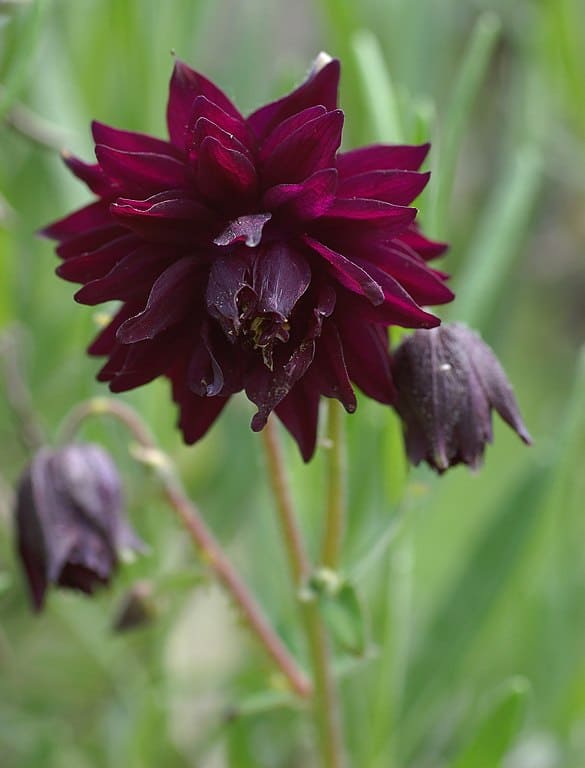
The Chocolate Soldier Columbine (Aquilegia ‘Chocolate Soldier’) is a mesmerizing perennial that captures attention with its rich, chocolate-colored blooms. This cultivar features striking, bi-colored flowers that display deep brown petals with hints of maroon and cream, resulting in an enchanting combination that stands out in any garden setting. The unique coloration of Chocolate Soldier not only distinguishes it from other columbine varieties but also adds an exotic touch to garden landscapes.
These plants are known for their unique, spurred petal structure, which attracts hummingbirds and pollinators, making them ideal additions to wildlife gardens. Chocolate Soldier Columbine thrives in cooler climates, preferring partial shade and well-drained soil. Its ability to tolerate drought once established makes it a low-maintenance yet visually stunning choice for gardeners.
Flowering typically occurs in late spring to early summer, providing a burst of colors just as other blooms begin to emerge. The charming and whimsical appearance of these columbines complements other earthy tones and can be effectively paired with brighter blooms for a visually dynamic garden. Additionally, their charming shape and unique color can evoke feelings of nostalgia, reminding many of simpler times spent in nature.
Brown Exotica Daylily
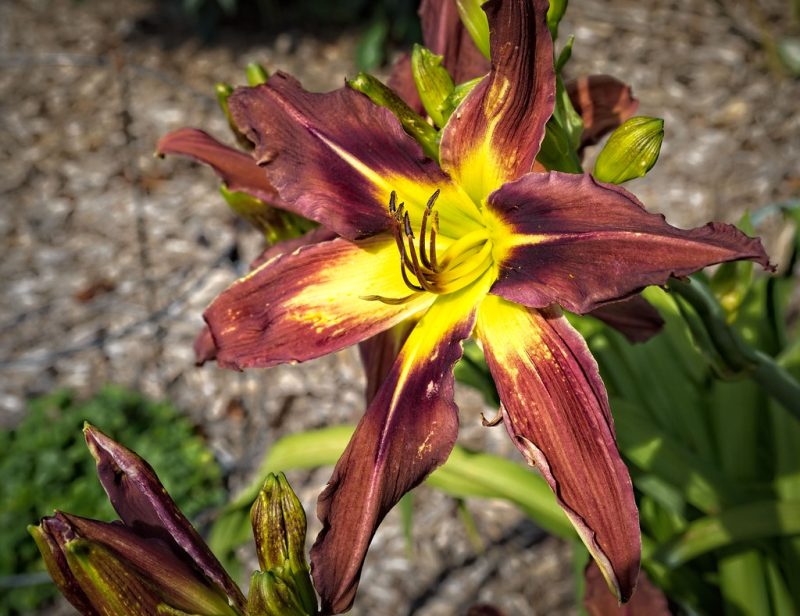
The Chocolate Candy Daylily (Hemerocallis ‘Chocolate Candy’) is an eye catching plant that entices both gardeners and flower enthusiasts with its dramatic, deep chocolate-brown petals accented by vibrant gold. This unique coloration provides a captivating contrast that makes the daylily a standout choice for any garden bed or border. The funnel-shaped blooms, which typically measure 4 to 5 inches across, blossom in abundance during the summer months, creating a spectacular display.
Daylilies are known for their robustness and adaptability, and the Chocolate Candy variety is no exception. This perennial thrives in various soil types and can tolerate different light conditions, although it performs best in sunny locations. One of the most appealing features of daylilies is their resilience; once established, they require minimal care and can bloom profusely year after year.
Moreover, Chocolate Candy Daylilies attract a variety of pollinators, including bees and butterflies, adding ecological value to any landscape. These flowers are typically short-lived, lasting only a day, but they blossom in succession, ensuring a prolonged display throughout the summer. Their eye-catching colors and ease of care make them a perfect choice for gardeners looking to add a bold, chocolate-hued accent to their floral collections.
Hot Chocolate Flowering Tobacco
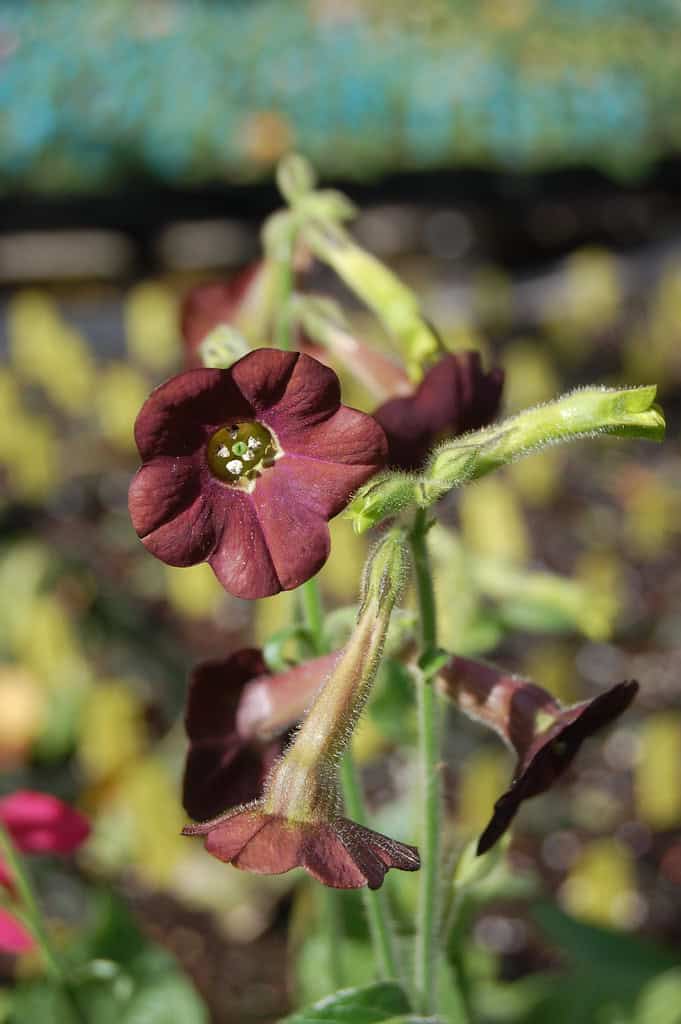
The Hot Chocolate Flowering Tobacco (Nicotiana alata ‘Hot Chocolate’) is an exotic perennial that captivates with its stunning deep brown flowers, which almost appear black in certain lighting. The trumpet-shaped blooms release a sweet, intoxicating fragrance in the evening, making them an alluring addition to nighttime gardens and spaces where the scent can be enjoyed. With an elegant, upright growth habit, Hot Chocolate Tobacco can reach heights of up to 3 feet, bringing vertical interest to any planting area.
Native to South America, this flowering tobacco variety thrives in well-drained soil and prefers full sun to partial shade. Its ability to tolerate varying climatic conditions makes it a suitable choice for many types of gardens, from casual to formal. Hot Chocolate Flowering Tobacco blooms from late spring to early fall, providing a long season of fragrant color.
This plant is also known for attracting a wide range of pollinators, especially moths at night, which are drawn to its sweet scent. In addition to its ecological benefits, the striking dark flowers make a bold statement in any garden, serving as a dramatic contrast to lighter blooms and foliage. The combination of its captivating fragrance and sumptuous color adds a sensory dimension to gardening and makes the Hot Chocolate Flowering Tobacco a must-have for those seeking to explore the beauty of brown flowers.
Golden Leafed-Edge Orchid
The Golden Leafed-Edge Orchid (Oncidium ‘Golden Nugget’) is a stunning example of an orchid that incorporates brown into its vibrant floral display. This remarkable plant features clusters of small flowers, predominantly in shades of yellow with striking brown spots, creating a captivating visual appeal that resembles a sprinkling of chocolate on caramel. These small yet flamboyant blooms typically emerge on tall spikes and can last for several weeks, bringing eye-catching color and texture to any orchid collection.
One of the defining characteristics of the Golden Leafed-Edge Orchid is its unique leaf structure. The leaves have a brilliant golden edge that provides a striking contrast to the dark brown and yellow blooms. The combination creates a two-toned effect that is particularly effective in brightening shady corners of the garden and enhancing container arrangements. When properly cared for, this orchid thrives in bright, indirect light and appreciates humidity, making it a perfect houseplant for those seeking to cultivate an exotic environment indoors.
This orchid is also known for its sweet fragrance, which can fill a room or garden with delightful scents, attracting various pollinators like bees and butterflies. Caring for the Golden Leafed-Edge Orchid requires attention to watering and ensuring that roots are not left sitting in water, as this can lead to root rot. With the right conditions, this orchid becomes a memorable centerpiece that showcases the rich diversity and beauty of brown flowers.
Graham Thomas Austin Rose
The Graham Thomas Austin Rose (Rosa ‘Graham Thomas’) is a classic English rose that exudes elegance with its warm, golden-brown petals. This mesmerizing flower is renowned for its rich, apricot-yellow hue that deepens into a warm, honey-brown as it opens fully, providing a luscious appearance that adds depth and sophistication to any garden. The blooms are large, cup-shaped, and carry a delightful fruity fragrance, making them a sensory wonder in addition to their visual appeal.
As a hybrid rose, Graham Thomas is particularly prized for its robust growth habit and excellent disease resistance. It flourishes in full sun and well-drained soil, ensuring a prolific display of blooms throughout the summer and into the early fall. This variety is also known to attract pollinators like bees and butterflies, contributing to a thriving garden ecosystem.
Graham Thomas roses are often used in formal landscapes, perennial borders, and cottage gardens, where their dusky-hued petals can create striking contrasts with other vibrant flowers. The combination of warmth in coloration and delectable scent makes this rose a popular choice for wedding bouquets and special occasions, where it symbolizes love and beauty. Whether planted in a dedicated rose garden or integrated into mixed flower beds, the Graham Thomas Austin Rose adds a touch of timeless charm and the delicate elegance of brown flowers.
Katelli Bronze Garden Mum
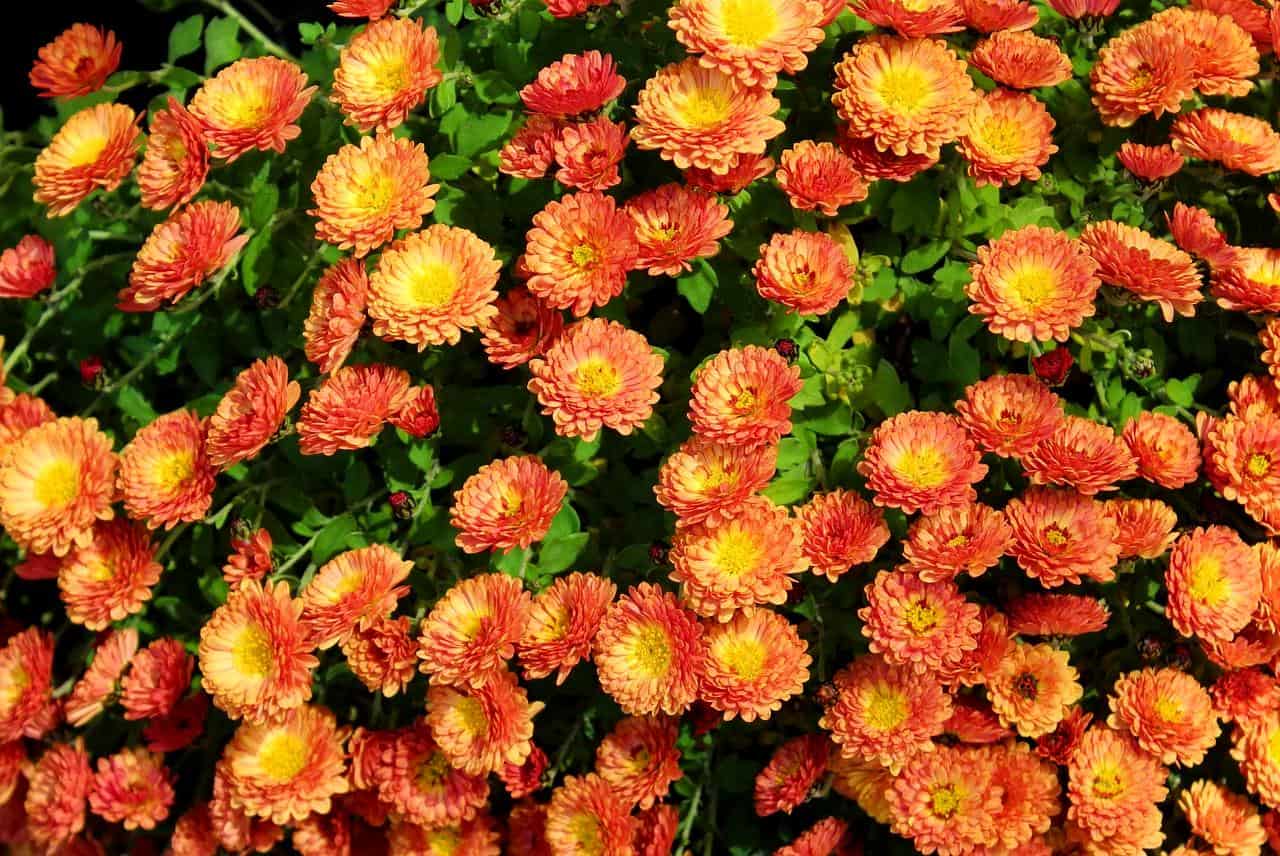
The Katelli Bronze Garden Mum (Chrysanthemum x morifolium ‘Katelli Bronze’) stands out as a perennial favorite among gardeners seeking to incorporate brown flowers into their landscapes. Known for its stunning, bronze-hued petals that capture the rich, warm color of autumn, this garden mum features a unique, cascading growth habit that makes it suitable for both containers and garden beds. The flower heads resemble a plush cushion of bronze-tipped petals with yellow centers, creating a striking visual that complements various garden themes.
This cultivar is particularly resilient and blooms profusely in the fall, providing a much-needed pop of color as other flowers begin to fade. The Katelli Bronze Garden Mum thrives in full sun and well-drained soil, where its low-maintenance nature and adaptability make it an ideal choice for both novice and experienced gardeners alike. Additionally, this variety is excellent for attracting pollinators, helping to create a vibrant ecosystem in your outdoor space.
In addition to its natural beauty, the Katelli Bronze Garden Mum serves as an excellent cut flower, retaining its visual appeal in arrangements and centerpieces for seasonal celebrations. When paired with other fall flowers or ornamental grasses, this mum can create breathtaking displays that capture the essence of autumn. Its warm hues and inviting fragrance make it a versatile option that not only enhances the beauty of gardens but also celebrates the rich tones embodied in brown flowers.
Japanese Arisaema / Japanese Cobra Lily
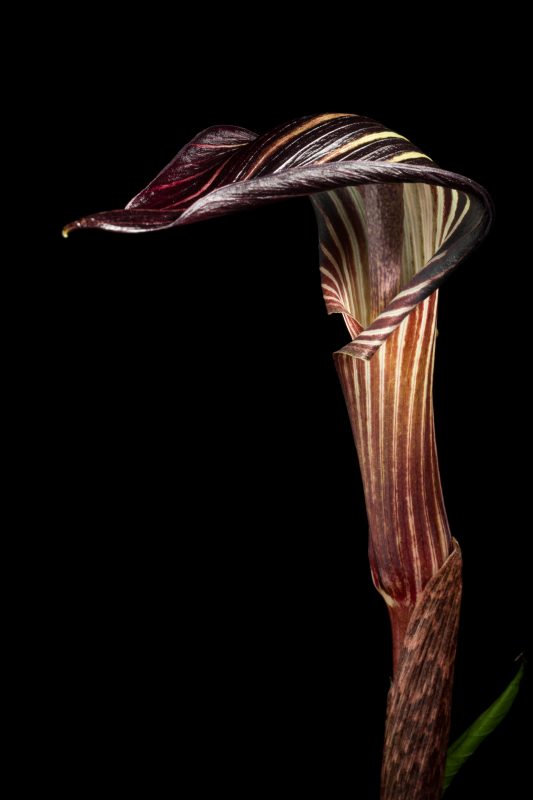
The Japanese Arisaema, commonly known as the Japanese Cobra Lily (Arisaema japonicum), is an enchanting plant that showcases a striking blend of earthy brown tones and beautifully patterned foliage. This perennial plant features a unique flower structure that resembles a hooded cobra—hence the nickname. The inflorescence consists of a spathe that envelops the spadix, allowing it to stand out with a fascinating appearance that captivates garden visitors.
The Japanese Cobra Lily thrives in shaded woodland gardens and prefers moist, well-drained soil, making it an excellent choice for adding interest to shaded areas. The flower typically emerges in late spring to early summer, with its curiously twisted form drawing attention amidst the lush greenery. While the main attraction is its unusual shape and color, the plant’s dark green, heavily veined leaves add further allure, creating a harmonious contrast with the flower’s browns and greens.
As a perennial, the Japanese Cobra Lily can thrive for years, gradually forming a colony that spreads through tuberous roots. Pollinated by insects, primarily beetles, the plant’s unique flower structure encourages various species to visit, promoting biodiversity in the garden. Gardener passion for this intriguing flower lies not only in its beauty but also in its rarity and unusual botanical characteristics, ensuring it remains a conversation starter in any seasonal display of brown flowers.
Echibeckia Daisy
The Echibeckia Daisy is a remarkable hybrid flower that combines the best features of both Echinacea (Coneflower) and Rudbeckia (Black-eyed Susan). This fusion produces a stunning bloom characterized by golden-yellow petals that gradient into rich, chocolate-brown centers. The aesthetic appeal of the Echibeckia Daisy makes it a striking addition to perennial borders, providing a warm, welcoming glow that attracts the eye.
These daisies thrive in full sun and are known for their resilience, able to flourish in various soil types, from sandy loam to clay. They are drought-tolerant once established, making them an excellent choice for water-wise gardens. The blooms typically appear in mid-summer and last into the fall, making them a staple choice for enhancing the extended beauty of autumn landscapes.
Beyond their beauty, Echibeckia Daisies play a crucial role in supporting local pollinators. Their vibrant colors and nectar-rich flowers draw in an array of beneficial insects, including bees, butterflies, and hummingbirds. Moreover, their seed heads provide a food source for birds in the winter, promoting biodiversity and sustainability in garden ecosystems. These multi-functional attributes highlight the Echibeckia Daisy not only as a visual delight but also as an essential component of an environmentally friendly garden.
Toffee Roses
Toffee Roses (Rosa ‘Toffee’) are a delightful variety characterized by their warm, caramel-brown hues and rich fragrance. The petals exude a soft, velvety texture that seems to shimmer in sunlight, resembling the color of sweet toffee—hence the name. These roses bloom in generous clusters, providing a luxurious display that is both romantic and sophisticated.
This variety is known for its excellent disease resistance and hardiness, making it suitable for a range of climates. Toffee Roses prefer well-drained soil, ample sunlight, and regular watering to maintain optimal health, producing blooms from spring until frost. Their fragrant flowers can be used as cut blooms in arrangements, adding an exquisite aroma and elegance to any setting.
Beyond their aesthetic charm, Toffee Roses are a symbol of warmth and affection, making them ideal for gifting on special occasions like anniversaries and celebrations. The rich brown tones allow them to pair beautifully with other floral varieties, combining effortlessly into arrangements alongside creams, soft pinks, and deep greens. In a garden setting, the presence of Toffee Roses can create a soft focal point, enhancing the overall ambiance with their luscious colors and intoxicating fragrance.
Earthwalker Sunflowers
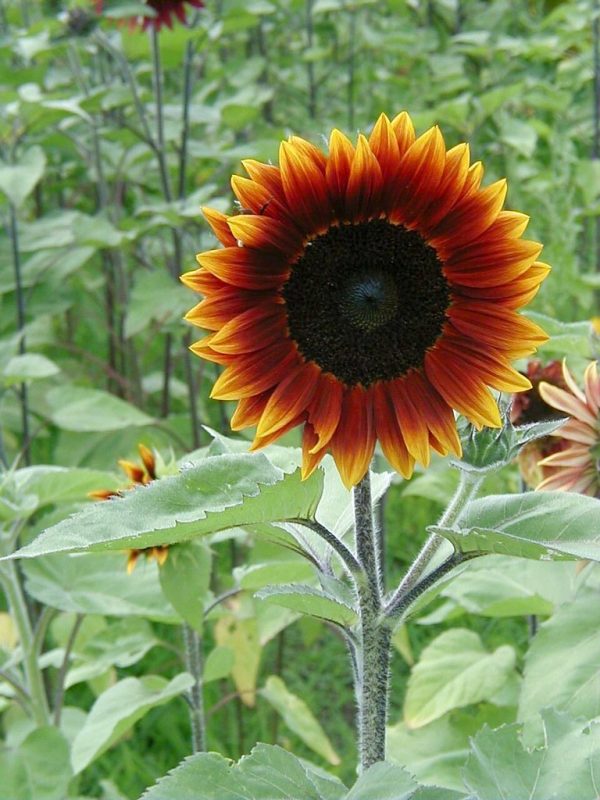
The Earthwalker Sunflower (Helianthus annuus ‘Earthwalker’) is a stunning and unusual variety that features petals adorned with shades of warm brown and bronze, resembling the hues of autumn foliage. This striking flower reaches heights of 6 to 8 feet and showcases its beauty in late summer and early fall, creating an impressive architectural element in the garden.
One of the unique features of Earthwalker Sunflowers is their multi-branched growth habit, which can produce several flower heads on a single plant, providing a continuous display of large blooms. Their sturdy, tall stems and large round-shaped blooms attract an array of pollinators, especially bees and butterflies, making them an excellent choice for those looking to enhance their pollinator gardens.
Aside from their beauty, Earthwalker Sunflowers offer practical benefits as well. They are excellent for supporting wildlife, and their seeds are a favorite food source for birds in late summer and fall. Furthermore, their robust nature allows them to thrive in a variety of soil conditions and they tend to require minimal water once established. Incorporating Earthwalker Sunflowers into garden designs not only adds visual interest but also promotes ecological health and sustainability.
Tulip Brown Sugar
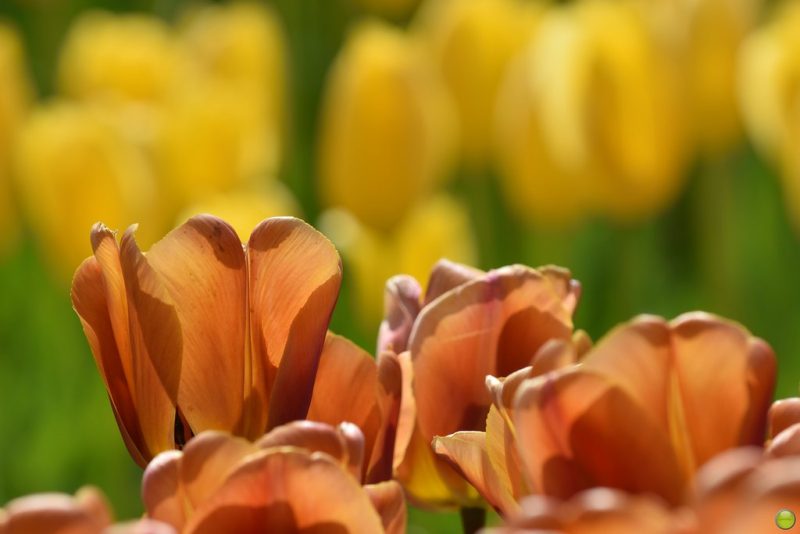
Tulip Brown Sugar (Tulipa ‘Brown Sugar’) is an exquisite addition to any spring garden, celebrated for its unique blend of warm, caramel-like tones that gracefully transition from rich chocolate brown to golden shades. The blossoming tulips reveal elegant, cup-shaped flowers that are relatively large and robust, making a striking impact when planted in clusters or as standalone specimens.
This variety is particularly noteworthy for its versatility in garden design. Tulip Brown Sugar thrives in full sun and well-drained soil, and its resilience allows it to adapt to various climates. The blooms typically appear in mid to late spring, providing a stunning visual contrast against the fresh greenery of emerging plants. When paired with other spring flowers, such as daffodils or bluebells, Brown Sugar tulips can create dynamic color contrasts and enhance the overall aesthetic of the flower bed.
Beyond their beauty, Tulip Brown Sugar flowers can offer a rich source of nectar for early pollinators, such as bees, which emerge in spring as temperatures begin to rise. When planted alongside other spring blooms, they contribute to a healthy ecosystem within the garden. Furthermore, these tulips work beautifully in cut flower arrangements, allowing their warm tones to add a touch of elegance and sophistication to indoor decor.
Velvet Queen Sunflower
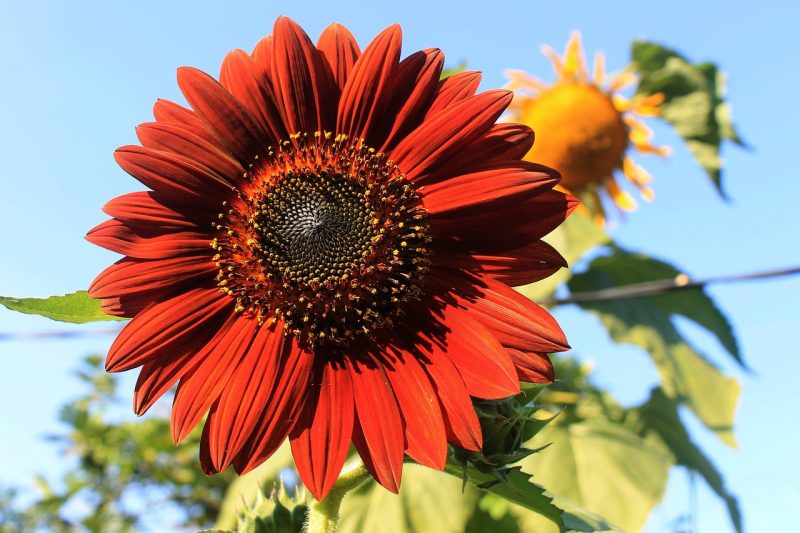
The Velvet Queen Sunflower (Helianthus annuus ‘Velvet Queen’) stands out in the sunflower family for its stunning, deep burgundy-brown petals and dark brown centers. This unique variety is both visually striking and incredibly versatile, growing to heights of about 5 to 7 feet, ideal for creating a bold floral statement in any garden or bouquet.
Characteristically, Velvet Queen Sunflowers have thicker, velvety petals that exude a plush appearance, distinguished from the typical bright yellow sunflowers that many people envision. They bloom in mid to late summer, making them a wonderful companion for other summer flowers and providing a warm, earthy contrast to lighter-colored blooms. Their height and size make them excellent for creating natural barriers or focal points within a garden landscape.
These sunflowers are not just beautiful but also beneficial for local wildlife. They attract a multitude of pollinators, including bees, butterflies, and other beneficial insects, which are crucial for maintaining healthy ecosystems. After the blooms fade, their mature seeds become a food source for various bird species in the autumn, ensuring that the plant continues to support wildlife even after flowering. Thus, Velvet Queen Sunflowers are ideal for those looking to enhance both the beauty and biodiversity of their gardens.
Honey Spurge
Honey Spurge (Euphorbia diligently) is a captivating perennial that showcases subtle, earthy beauty through its unique features. This plant belongs to the spurge family and is recognized for its striking, rich brownish-yellow bracts that surround small clusters of inconspicuous flowers. These bracts have a honey-like appearance, which is reflected in the plant’s name, and they transition from spring through summer to provide long-lasting interest in the garden.
One of the favorable aspects of Honey Spurge is its low maintenance requirements and adaptability to various conditions. It thrives in well-drained soils and can endure both sun and partial shade, making it versatile across different garden spaces. Its drought-resistant nature makes it suitable for xeriscaping, promoting water-wise gardening techniques. The Honey Spurge creates a beautiful backdrop for other colorful flowers, allowing riper shades of burgundy, gold, and cream to pop against its warm, neutral tones.
Moreover, this plant is an asset to local wildlife, particularly pollinators. The nectar from its inconspicuous flowers attracts a variety of bees and butterflies while providing an essential food source, enhancing biodiversity within the garden. The Honey Spurge also plays a role in soil stabilization, making it a fantastic choice for erosion control. Its distinct coloring, adaptability, and ecological benefits solidify Honey Spurge as an exceptional contender among brown flowers.
Ophrys ariadnae

Ophrys ariadnae, also known as the Ariadne Ophrys, is a fascinating and often overlooked species found primarily in Mediterranean regions. This orchid is notable for its extraordinary flower structure, which features a remarkable, velvety brown lip that resembles the appearance of a female bee. This mimicry is not just for show; it is a strategic adaptation to attract male bees for pollination, as the flowers emit pheromones that entice these insects.
The flower’s unique brown tones are complemented by subtle patterns that enhance its resemblance to a bee, making it a true marvel of nature’s design. Typically blooming in spring, Ophrys ariadnae thrives in well-drained, calcareous soils and is commonly found in grasslands and open woodland areas, adding a touch of intrigue to its natural landscape.
One of the extraordinary aspects of Ophrys ariadnae is its role within the ecosystem. The orchid’s fascinating pollination strategy not only ensures its reproductive success but also aids in maintaining the population of local bee species. This mutualistic relationship underscores the importance of preserving habitats where these elusive orchids can thrive.
Due to its unique pollination mechanism and the specificity of its habitat requirements, Ophrys ariadnae can be sensitive to environmental changes. Conservation efforts are essential to protect this and other species within the Ophrys genus, particularly in regions experiencing habitat loss.
Decipiens Piaranthus
Decipiens Piaranthus, commonly known as the False Stapelia or Starfish Flower, is a fascinating succulent that showcases unique brown flowers. This plant’s ghostly, fleshy stems form a robust rosette, from which its stunning blooms emerge. The flowers are often star-shaped, measuring up to five inches across, featuring deep, chocolate-brown petals adorned with pale yellow and maroon markings, which evoke the look of decaying meat—a clever adaptation for attracting pollinators such as flies and beetles.
Blooming during the warmer months, typically in summer, the flowers of Decipiens Piaranthus emit a pungent odor reminiscent of rotting flesh, a characteristic that is essential for its survival strategy. This scent attracts specific pollinators that are drawn to carrion, ultimately leading to successful pollination of the plant. This adaptation underscores the remarkable diversity of floral strategies across the plant kingdom, showing how species evolve to fulfill ecological roles.
Cultivating Decipiens Piaranthus requires a keen understanding of its preferences for well-drained soils and full sun exposure. It is quite drought-tolerant, making it an ideal plant for succulent gardens or xeriscaping. Its unique appearance and fascinating pollination strategy add a touch of intrigue, making it a conversation starter among plant enthusiasts and gardeners alike. Careful handling and placement ensure that its unconventional beauty can be appreciated without overwhelming nearby plants.
Conclusion
In our exploration of the Antler Orchid, Decipiens Piaranthus, and Chocolate Cosmos, we see how brown flowers can offer more than visual intrigue; they bring complex adaptations, captivating fragrances, and vital ecological roles to the landscapes they inhabit. Each of these plants enriches our appreciation for the diversity found within the spectrum of floral colors while inviting gardeners to experiment with this often-overlooked palette. By incorporating such remarkable specimens into our gardens, we celebrate the exceptional beauty and importance of brown flowers in nature.


